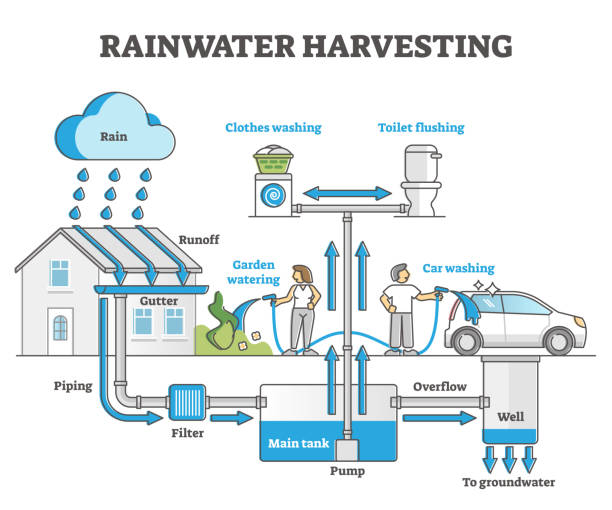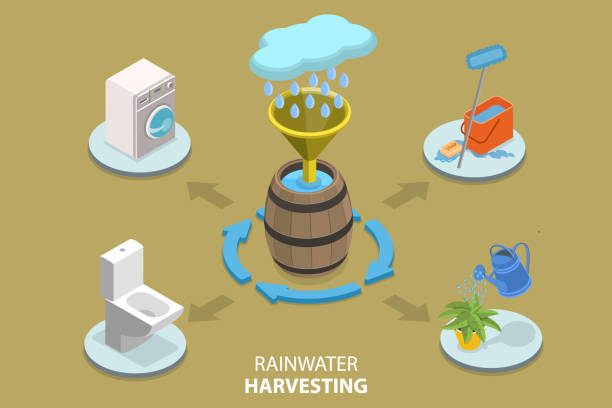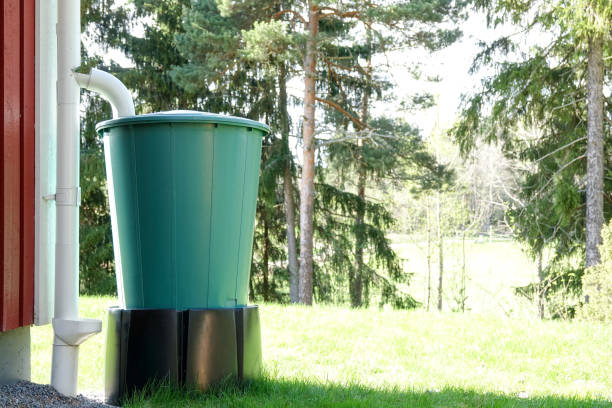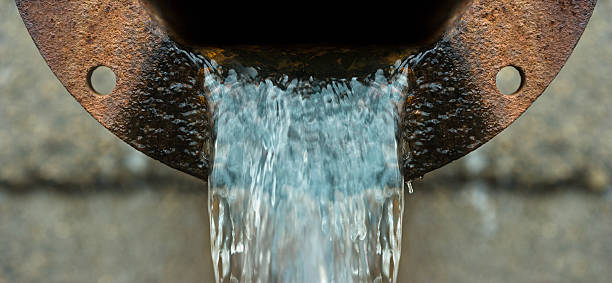The Benefits of Rainwater Harvesting: Collecting and Reusing Precious Water
This post contains affiliate links. I may earn a commission at no extra cost to you if you make a purchase. Note that I’m not a health or outdoor safety professional, so further research is advised. Your support keeps Outdoors A-Z running—thank you! Read the full disclosure.. Read the full disclosure here.
Rainwater is a valuable resource that often goes unnoticed and underutilized. With growing concerns about water scarcity and the need for sustainable solutions, rainwater harvesting has gained significant attention. This practice involves collecting and storing rainwater for various purposes, offering numerous benefits for the environment, economy, and society. In this article, we will explore the advantages of rainwater harvesting and discuss how it can help address water-related challenges.
Table of Contents
Introduction
Water is a finite resource essential for all forms of life, and its conservation is crucial to ensure a sustainable future. Rainwater harvesting is a technique that enables the collection and utilization of rainwater, mitigating the strain on traditional water sources such as rivers, lakes, and groundwater. By capturing and reusing rainwater, individuals and communities can actively participate in water conservation efforts.
Environmental Benefits of Rainwater Harvesting

Reducing strain on local water sources
One of the primary benefits of rainwater harvesting is its ability to reduce pressure on local water sources. By utilizing rainwater for non-potable purposes like irrigation, toilet flushing, and washing, less strain is placed on freshwater reserves. This practice helps conserve water for essential uses while reducing the need for extracting and treating water from natural sources.
Mitigating stormwater runoff and erosion
Rainwater harvesting also plays a crucial role in mitigating stormwater runoff and erosion. When rain falls on impermeable surfaces like rooftops and pavements, it quickly accumulates and flows into drains, often carrying pollutants and causing soil erosion. By capturing and redirecting rainwater to storage systems, the volume and intensity of stormwater runoff can be significantly reduced, minimizing the impact on local waterways and ecosystems.
Supporting ecosystem health
By promoting rainwater harvesting, we can support the health of local ecosystems. Traditional water sources are often overexploited, leading to ecological imbalances and the degradation of habitats. Rainwater harvesting helps maintain a sustainable water balance, ensuring a continuous supply for plants, animals, and aquatic life. This, in turn, contributes to the overall health and biodiversity of the ecosystem.
Economic Benefits of Rainwater Harvesting

Lowering water bills
Rainwater harvesting can lead to substantial savings on water bills. By utilizing rainwater for various household or commercial purposes, such as gardening and cleaning, the demand for treated water from utility providers decreases. As a result, individuals and businesses can significantly reduce their water bills, leading to long-term cost savings.
Reducing the demand for treated water
In addition to lower water bills, rainwater harvesting helps reduce the demand for treated water. Treating water to meet drinking water standards requires substantial energy and resources. By substituting non-potable water needs with harvested rainwater, the demand for treated water decreases, alleviating the burden on water treatment facilities and reducing energy consumption.
Enhancing property value
Implementing rainwater harvesting systems can enhance the value of properties. As water scarcity becomes an increasingly significant concern, homes and buildings equipped with efficient rainwater harvesting systems are viewed as more desirable. Potential buyers or tenants recognize the long-term savings and environmental benefits associated with such properties, making them more attractive in the real estate market.
Social Benefits of Rainwater Harvesting
Promoting self-sufficiency and resilience
Rainwater harvesting promotes self-sufficiency and resilience at both individual and community levels. By collecting rainwater, individuals become less dependent on external water sources, especially during periods of drought or water restrictions. Communities that adopt rainwater harvesting practices enhance their resilience to water shortages and strengthen their ability to meet water demands sustainably.
Creating opportunities for community involvement
Implementing rainwater harvesting systems often involves community participation, creating opportunities for collaboration and engagement. Community-based projects can educate and empower individuals to take an active role in water conservation efforts. Public awareness campaigns, workshops, and volunteer initiatives can help build a sense of collective responsibility towards water resources.
Enhancing water security in arid regions
Rainwater harvesting offers a viable solution for water security in arid regions or areas with limited access to freshwater sources. By maximizing the collection and storage of rainwater during periods of rainfall, communities can ensure a reliable water supply throughout the year. This approach reduces their vulnerability to water scarcity, particularly in regions where traditional water sources are scarce or unreliable.
Methods of Rainwater Harvesting

Rainwater can be harvested using various techniques, depending on the location, available space, and intended use. The following methods are commonly employed:
Roof-based collection systems
Roof-based collection systems involve capturing rainwater from rooftops and channeling it into storage tanks or cisterns. This method is widely used for residential and commercial buildings, as rooftops provide large surface areas for rainwater collection. Gutters and downspouts are used to direct the water into storage containers, which can be placed above or below ground.
Surface runoff collection
Surface runoff collection involves capturing rainwater from open spaces such as lawns, driveways, or paved areas. Techniques like contouring the landscape or constructing swales and berms can redirect rainwater towards collection points, where it can be stored or infiltrated into the ground. Surface runoff collection is particularly useful in areas with limited roof space or when the collected water is intended for irrigation purposes.
Underground storage systems
In areas with space limitations or aesthetic considerations, underground storage systems provide an efficient solution. These systems involve burying storage tanks or cisterns beneath the ground, either partially or entirely. Rainwater is directed into these underground containers via pipes or drains connected to rooftops or surface areas. Underground storage systems are discreet and help optimize land use while allowing for significant rainwater storage capacity.
Implementing Rainwater Harvesting Systems
Implementing an effective rainwater harvesting system requires careful planning and consideration of various factors. The following steps outline the key aspects of implementing such systems:
Assessing water needs and usage patterns
Before installing a rainwater harvesting system, it’s essential to assess water needs and usage patterns. Understanding the demand for water and identifying specific areas or activities where harvested rainwater can be utilized effectively ensures that the system is tailored to meet those needs. Consideration should be given to factors such as irrigation requirements, toilet flushing, laundry, or outdoor cleaning.
Choosing appropriate storage and filtration methods
Selecting the appropriate storage and filtration methods is critical to ensure the quality and usability of harvested rainwater. Storage tanks or cisterns should be made of durable, non-toxic materials and designed to prevent contamination or evaporation. Filtration systems, such as mesh screens or sediment filters, should be incorporated to remove debris and contaminants from the collected water, enhancing its suitability for the intended purpose.
Proper maintenance and monitoring
Regular maintenance and monitoring are essential to ensure the efficiency and longevity of rainwater harvesting systems. Tanks or cisterns should be inspected periodically for leaks, cracks, or sediment buildup. Gutters and downspouts should be cleaned to prevent blockages. It’s also crucial to monitor water levels, especially during periods of heavy rainfall or prolonged drought, to assess storage capacity and plan water usage accordingly.
Best Practices for Rainwater Harvesting

To optimize the benefits of rainwater harvesting, certain best practices should be followed:
Rainwater quality and treatment considerations
While rainwater is generally considered safe for non-potable uses, some considerations should be taken into account. The quality of harvested rainwater can be affected by factors such as atmospheric pollution, bird droppings, or debris from rooftops. Implementing appropriate filtration and treatment methods, such as UV disinfection or chlorination, can help ensure the water is suitable for specific applications.
Optimizing water storage capacity
To maximize the effectiveness of rainwater harvesting systems, it’s important to optimize water storage capacity. Calculating the required storage capacity based on water demand and rainfall patterns helps ensure an adequate supply throughout the year. Additionally, integrating overflow systems or designing interconnected storage tanks can prevent water wastage during periods of heavy rainfall.
Utilizing harvested rainwater efficiently
Efficient utilization of harvested rainwater is key to realizing the benefits of rainwater harvesting. This involves matching the appropriate water source to the intended use and implementing water-saving measures where possible. For example, using harvested rainwater for irrigation instead of treated water or installing low-flow fixtures and appliances can significantly reduce water consumption.
Case Studies of Successful Rainwater Harvesting Projects
Numerous successful rainwater harvesting projects have been implemented worldwide, showcasing the positive impact and outcomes achieved. Some notable examples include:
Example 1: Rooftop Rainwater Harvesting in Singapore
In response to water scarcity challenges, Singapore has embraced rainwater harvesting on a large scale. The country has implemented a comprehensive rooftop rainwater harvesting system, where rainwater is collected from rooftops and channeled into storage tanks. The collected water is then treated and used for various non-potable purposes, such as irrigation, toilet flushing, and cooling systems. This initiative has reduced Singapore’s dependence on imported water and contributed to water sustainability.
Example 2: Community-Based Rainwater Harvesting in Rajasthan, India
Rajasthan, a state in India known for its arid climate, has implemented community-based rainwater harvesting projects to combat water scarcity. These projects involve constructing check dams and small reservoirs to capture rainwater during the monsoon season. The collected water is used for irrigation, livestock, and domestic purposes. By harnessing rainwater, communities in Rajasthan have improved agricultural productivity, increased water availability, and enhanced overall livelihoods.
Overcoming Challenges in Rainwater Harvesting
While rainwater harvesting offers significant benefits, there are challenges that need to be addressed for its successful implementation:
Addressing legal and regulatory hurdles
In some regions, legal and regulatory frameworks may pose challenges to the widespread adoption of rainwater harvesting. Outdated regulations or unclear policies regarding water rights, water quality standards, or ownership of rainwater can hinder the implementation of rainwater harvesting systems. Advocacy efforts and policy reforms are necessary to create an enabling environment for rainwater harvesting practices.
Managing system design and installation complexities
Designing and installing rainwater harvesting systems require technical expertise and careful consideration of site-specific factors. Factors such as rainfall patterns, available space, and water demand must be assessed to determine the appropriate system size and configuration. Lack of knowledge or access to skilled professionals can pose challenges to the successful implementation of rainwater harvesting systems.
Educating the public and raising awareness
Public awareness and education play a vital role in promoting rainwater harvesting. Many people are unaware of the benefits and feasibility of rainwater harvesting or may have misconceptions about its effectiveness. Educating the public about the importance of water conservation, the potential savings, and the steps involved in implementing rainwater harvesting systems can help overcome resistance or skepticism.
Final Thoughts
Rainwater harvesting is a sustainable practice that offers numerous benefits for individuals, communities, and the environment. By capturing and reusing rainwater, we can reduce strain on traditional water sources, mitigate stormwater runoff, and support ecosystem health. Rainwater harvesting also provides economic advantages, such as lower water bills and increased property value. Additionally, it promotes self-sufficiency, community involvement, and water security, especially in arid regions. With proper implementation, rainwater harvesting can contribute significantly to water conservation efforts and create a more sustainable future.
Frequently Asked Questions (FAQs)
Is rainwater safe for drinking?
Rainwater harvested from rooftops is generally considered safe for non-potable uses, such as irrigation or toilet flushing. However, for drinking purposes, additional treatment and filtration may be required to ensure water quality and safety.
What is the cost of implementing a rainwater harvesting system?
The cost of implementing a rainwater harvesting system can vary depending on various factors, including the system size, components, installation requirements, and regional factors. It is recommended to consult with professionals or contractors to get accurate cost estimates based on specific needs and local conditions.
Can rainwater harvesting be implemented in urban areas?
Yes, rainwater harvesting can be implemented in urban areas. In fact, rooftop rainwater harvesting systems are commonly used in urban environments where space limitations exist. Surface runoff collection and underground storage systems can also be adapted to suit urban settings.
Does rainwater harvesting contribute to water conservation?
Yes, rainwater harvesting contributes significantly to water conservation. By capturing and utilizing rainwater for non-potable uses, it reduces the demand for treated water from traditional sources, helping to conserve water resources and alleviate strain on water supply systems.
Are there any incentives or rebates available for rainwater harvesting systems?
In some regions, there may be incentives or rebates available to promote rainwater harvesting and water conservation. These can include grants, tax credits, or subsidies provided by government agencies or water utilities. It’s advisable to check with local authorities or relevant organizations to explore any available incentives.















